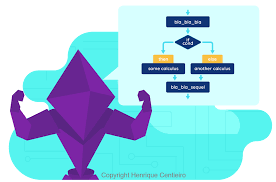
In Blockchain technology, Smart Contracts are very crucial in helping to make the transactions taking place more safe and secure and function in a specific way. And not just that, it helps other components like applications running on these platforms be even more accessible. But what is a smart contract?
What is a smart contract?
A smart contract is a self-executing contract where the contents of a buyer-seller agreement are inscribed in the lines of code inside a digital contract. Using smart contracts makes transactions traceable, transparent, and irreversible.

What are the benefits of a smart contract?
Accuracy, Speed, and Efficiency
- The contract is immediately executed when a condition is met.
- Because smart contracts are digital and automated, there is no paperwork to deal with, and
- No time is spent correcting errors that can occur when filling out documentation by hand.
Trust and Transparency
- There’s no need to worry about information being tampered with for personal gain because there’s no third party engaged and
- Encrypted transaction logs are exchanged among participants.
Security
- Because blockchain transaction records are encrypted, they are extremely difficult to hack.
- Furthermore, because each entry on a distributed ledger is linked to the entries before and after it, hackers would have to change the entire chain to change a single record.
Savings
- Smart contracts eliminate the need for intermediaries to conduct transactions, as well as the time delays and fees that come with them.

How Do Smart Contracts Work?
Step 1: Business teams collaborate with developers to define their criteria for the smart contract’s desired behavior in response to certain events or circumstances.
Step 2: Conditions such as payment authorization, shipment receipt, or a utility meter reading threshold are examples of simple events.
Step 3: More complex operations, such as determining the value of a derivative financial instrument, or automatically releasing an insurance payment, might be encoded using more sophisticated logic.
Step 4: The developers then use a smart contract writing platform to create and test the logic. After the application is written, it is sent to a separate team for security testing.
Step 5: An internal expert or a company that specializes in vetting smart contract security could be used.
Step 6: The contract is then deployed on an existing blockchain or other distributed ledger infrastructure once it has been authorized.
Step 7: The smart contract is configured to listen for event updates from an “oracle,” which is effectively a cryptographically secure streaming data source, once it has been deployed.
Step 8: Once it obtains the necessary combination of events from one or more oracles, the smart contract executes.
Limitation of Smart Contracts
- Because smart contracts can’t send HTTP queries, they can’t acquire information about “real-world” events. This is by design.
- Using external data could jeopardize consensus, which is critical for security and decentralization.

Use Cases of Smart Contracts
- The use cases for smart contracts range from simple to complex.
- They can be used for simple economic transactions, such as moving money from point A to point B, as well as for smart access management in the sharing economy.
- Smart contracts could disrupt many industries.
- Banking, insurance, energy, e-government, telecommunications, the music business, art, mobility, education, and many other industries have use cases.

Wrap Up
As blockchain technologies grow in use, so will the practice of writing and executing smart contracts. Smart Contracts offer users the benefits of accuracy, speed, efficiency, trust, transparency, security, and savings. If your business is investing in blockchain technology, take the time to invest in learning how to write a smart contract.






























